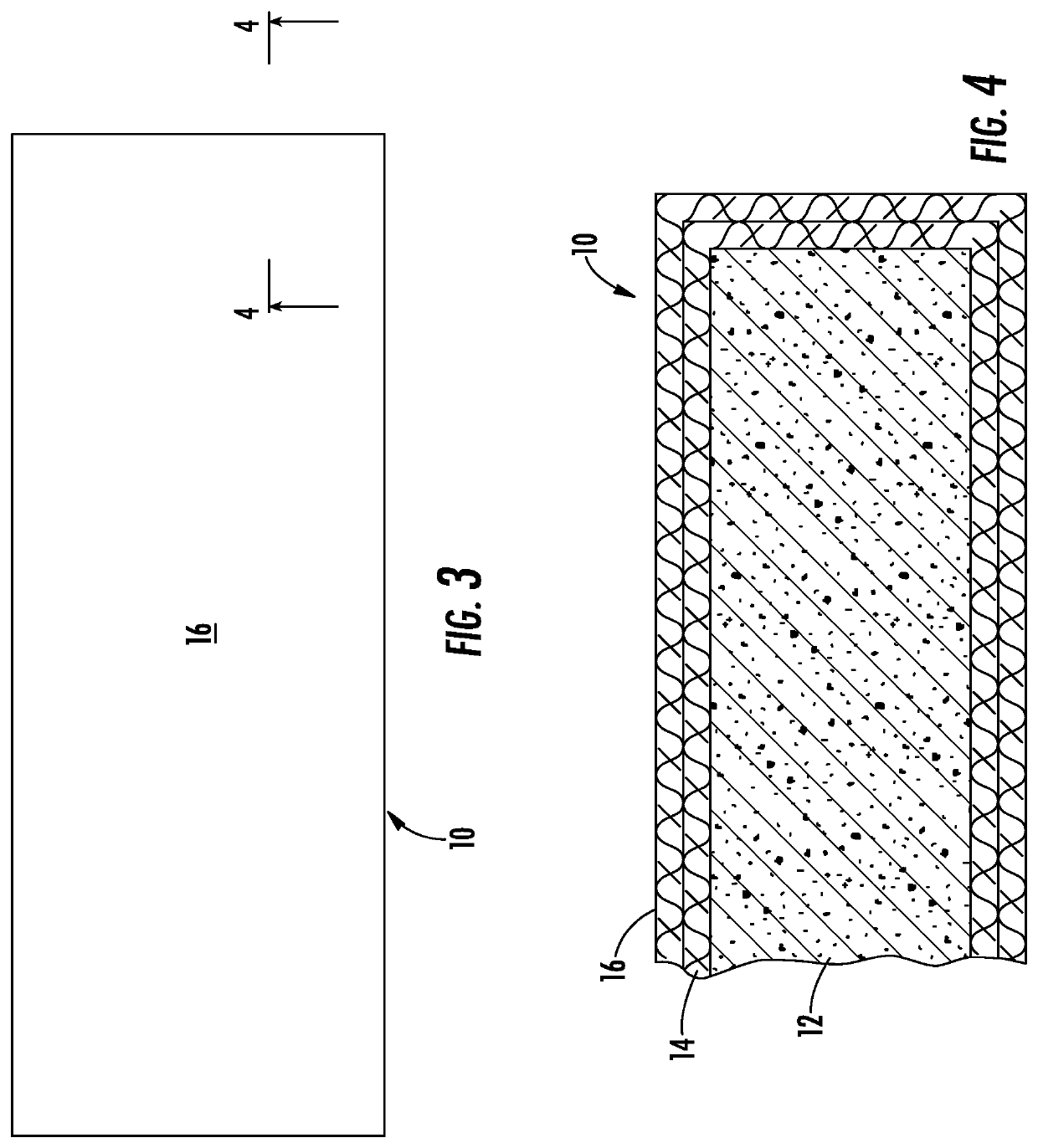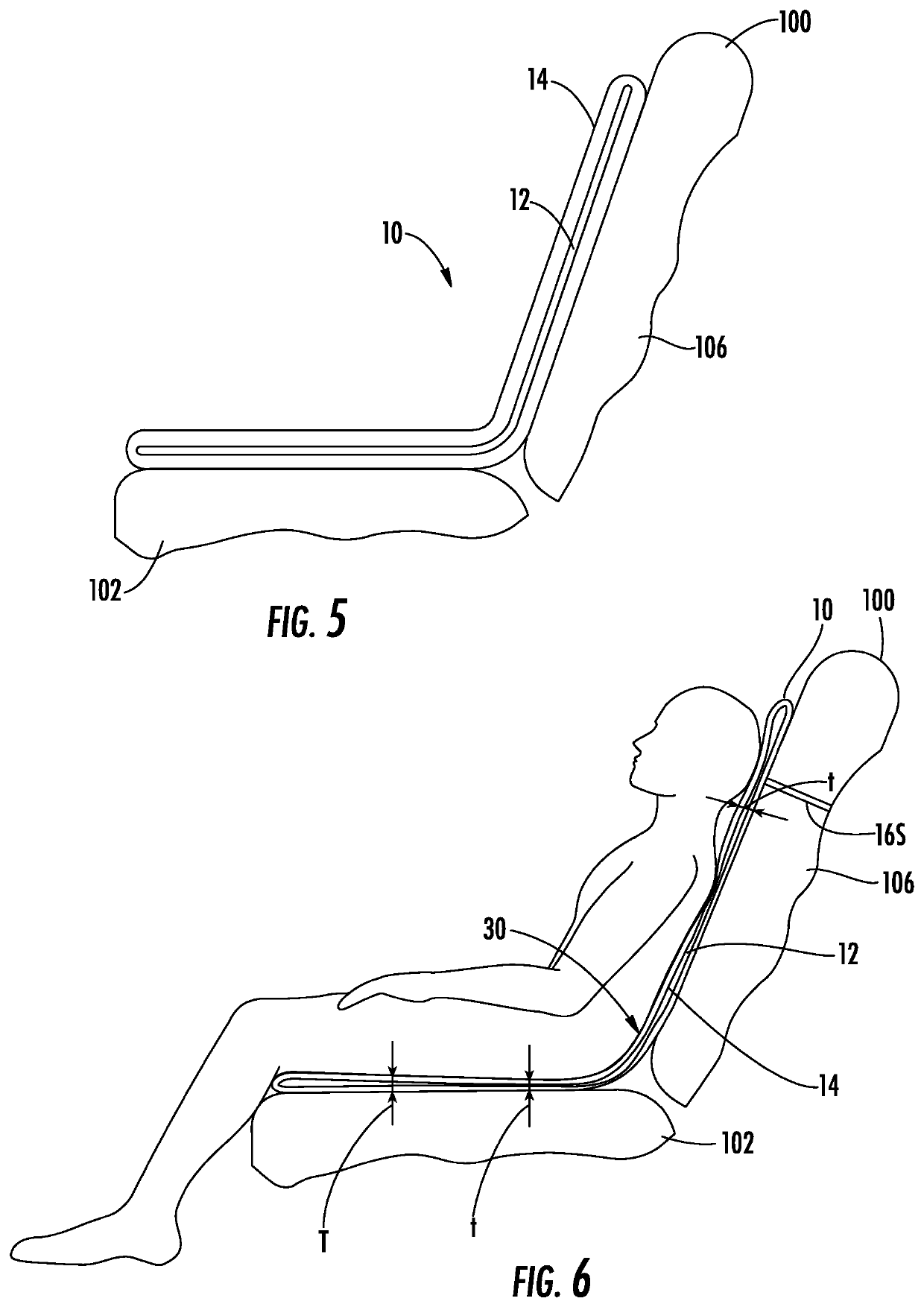Seat assembly
a seat and assembly technology, applied in the field of seats, can solve problems such as surface irregularities, and achieve the effect of enhancing support and comfort in the lumbar region
- Summary
- Abstract
- Description
- Claims
- Application Information
AI Technical Summary
Benefits of technology
Problems solved by technology
Method used
Image
Examples
Embodiment Construction
[0051]A seating pad assembly in accordance with the subject invention can be used on any indoor or outdoor seat, such as a transportation seat, an office chair, a stadium seat or the like. The embodiment illustrated herein shows a seating pad assembly used on a transportation seat, such as the airline seat 100 shown in FIG. 1. However, the seating pad assembly is not limited to use on the illustrated transportation seat. The seat 100 of the illustrated embodiment includes a hip / thigh support 102 disposed between two armrests 104. A back support 106 is hinged to the hip / thigh support 102 and can move between the substantially erect position shown in FIG. 1 and a partly reclined position (not shown). The back support 106 in some airline seats 100 also can be pivoted to a fully reclined condition where the back support 106 is substantially in the same plane as the hip / thigh support 102. A gap 108 necessarily exists between the hip / thigh support 102 and the back support 106 to accommoda...
PUM
 Login to View More
Login to View More Abstract
Description
Claims
Application Information
 Login to View More
Login to View More - R&D
- Intellectual Property
- Life Sciences
- Materials
- Tech Scout
- Unparalleled Data Quality
- Higher Quality Content
- 60% Fewer Hallucinations
Browse by: Latest US Patents, China's latest patents, Technical Efficacy Thesaurus, Application Domain, Technology Topic, Popular Technical Reports.
© 2025 PatSnap. All rights reserved.Legal|Privacy policy|Modern Slavery Act Transparency Statement|Sitemap|About US| Contact US: help@patsnap.com



